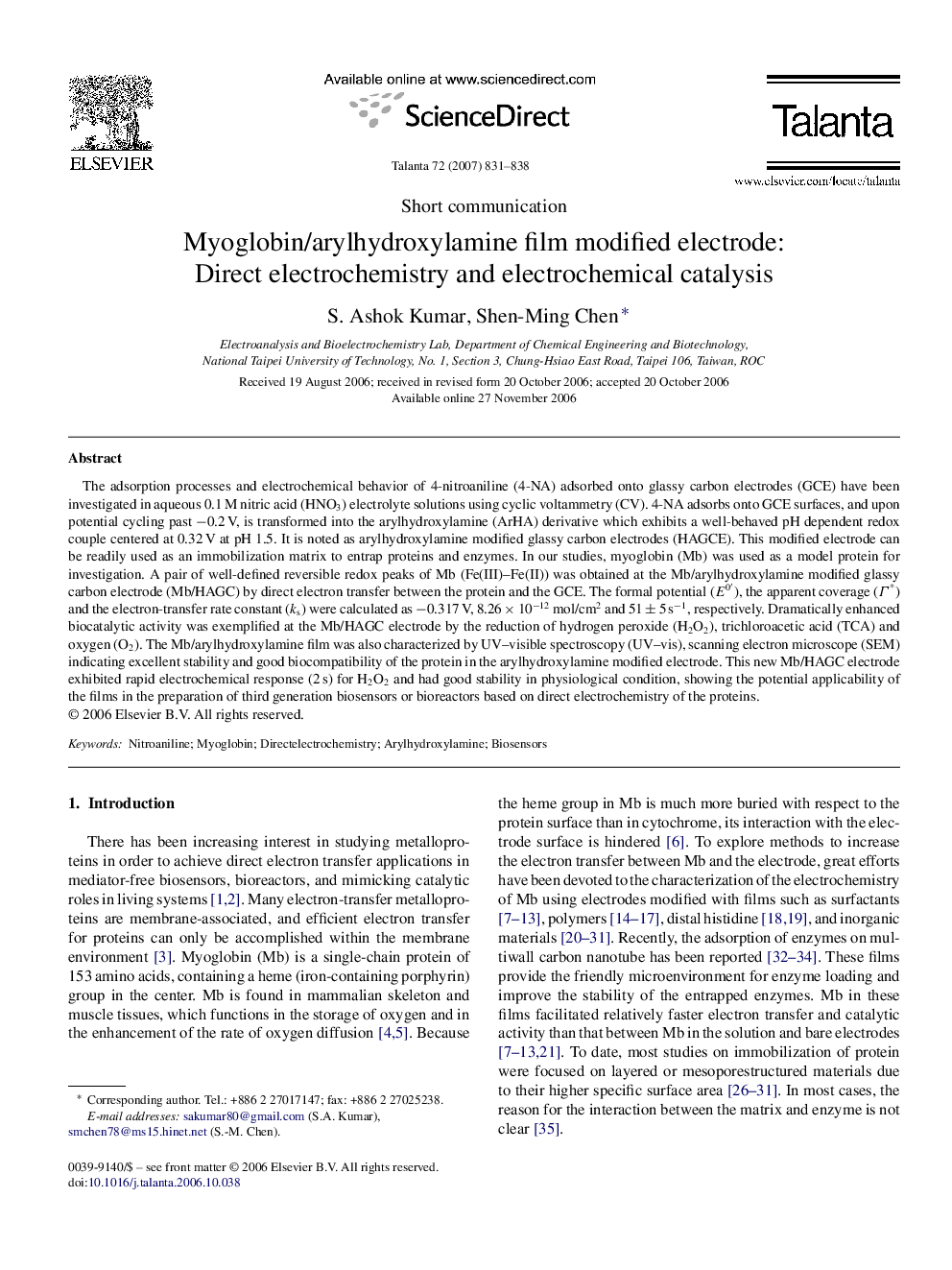| Article ID | Journal | Published Year | Pages | File Type |
|---|---|---|---|---|
| 1246016 | Talanta | 2007 | 8 Pages |
The adsorption processes and electrochemical behavior of 4-nitroaniline (4-NA) adsorbed onto glassy carbon electrodes (GCE) have been investigated in aqueous 0.1 M nitric acid (HNO3) electrolyte solutions using cyclic voltammetry (CV). 4-NA adsorbs onto GCE surfaces, and upon potential cycling past −0.2 V, is transformed into the arylhydroxylamine (ArHA) derivative which exhibits a well-behaved pH dependent redox couple centered at 0.32 V at pH 1.5. It is noted as arylhydroxylamine modified glassy carbon electrodes (HAGCE). This modified electrode can be readily used as an immobilization matrix to entrap proteins and enzymes. In our studies, myoglobin (Mb) was used as a model protein for investigation. A pair of well-defined reversible redox peaks of Mb (Fe(III)–Fe(II)) was obtained at the Mb/arylhydroxylamine modified glassy carbon electrode (Mb/HAGC) by direct electron transfer between the protein and the GCE. The formal potential (E0′E0′), the apparent coverage (Γ*) and the electron-transfer rate constant (ks) were calculated as −0.317 V, 8.26 × 10−12 mol/cm2 and 51 ± 5 s−1, respectively. Dramatically enhanced biocatalytic activity was exemplified at the Mb/HAGC electrode by the reduction of hydrogen peroxide (H2O2), trichloroacetic acid (TCA) and oxygen (O2). The Mb/arylhydroxylamine film was also characterized by UV–visible spectroscopy (UV–vis), scanning electron microscope (SEM) indicating excellent stability and good biocompatibility of the protein in the arylhydroxylamine modified electrode. This new Mb/HAGC electrode exhibited rapid electrochemical response (2 s) for H2O2 and had good stability in physiological condition, showing the potential applicability of the films in the preparation of third generation biosensors or bioreactors based on direct electrochemistry of the proteins.
